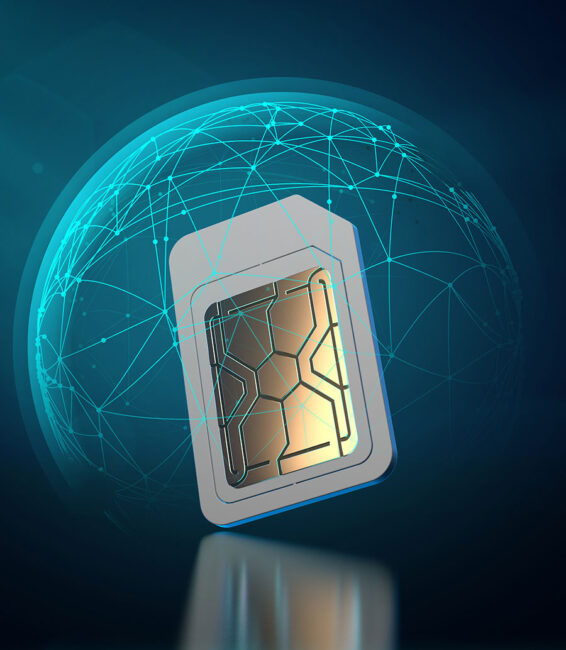
The IoT connectivity marketplace is talking about how global roaming through agreements between mobile network operators (MNOs) is losing relevance. Embedded Universal Integrated Circuit Card (eUICC) technology enables direct local connectivity provisioning in multiple markets with one SIM. This ability and changes in the consumer market brought many to state that eUICC will soon replace global roaming as the dominant IoT connectivity solution.
At Telit Cinterion, we disagree and maintain that roaming and eUICC have — and will continue to have — value for different use cases. So the issue isn’t whether one solution is better; it’s which is best for your unique IoT deployment and in what cases they should work together.
The Difference between Global Roaming and eUICC

The market buzz about the eUICC standard has muddied the waters. It confused customers over how emerging and legacy technologies can support their business — and which they should choose.
While eUICC may be a future-proof solution, global roaming is still vital in enabling IoT connectivity. Therefore, it’s essential to understand the differences between them.
IoT deployment through global roaming is traditionally done through a contractual agreement. The contract allows an IoT MVNO connectivity provider (like Telit Cinterion) to utilize the roaming agreements of an MNO (i.e., IMSI sponsor) for their customers’ global IoT deployment.
When an IoT customer requires coverage outside their market or in multiple markets, the IMSI sponsor is the conduit for meeting those needs through roaming agreements. With eUICC technology, there’s no need for this conduit.
eUICC and Localization
When we talk about eUICC as a competing solution to global roaming, it pertains only to the localization use case. In this use case, an agreement is signed with local MNOs in relevant markets. A local profile can be downloaded to the eUICC card according to its location.
This functionality allows service in multiple markets through multiple agreements on one SIM. Initially, this ability supported roaming in restricted markets. However, it is now viewed as an alternative to roaming regardless of roaming restrictions.
eUICC allows the customer to switch connectivity providers remotely without swapping SIMs in the field. This is known as the insurance model. It is a major advantage for the customer, but this functionality does not compete with global roaming.
Roaming profiles can be used on eUICC cards, future-proofing customers’ deployments and offering more redundancy, flexibility and optimization. When you hear people talking about eUICC taking over roaming, they mean localization through eUICC will replace global roaming.
Both solutions provide the same thing ― connectivity in multiple markets using one SIM wherever you are.
Which Is Better: Global Roaming or Localization through eUICC?

There are benefits and drawbacks to each solution. The crucial factor is evaluating your needs, preferences and business model, then choosing the best solution for the circumstances.
Global Roaming
Global roaming is an established, reliable and secure technology with a solid infrastructure and process that’s proven successful over time. Through one comprehensive coverage agreement, it provides an IoT device with global connectivity and access to multiple networks in each market.
However, some risks are usually associated with global roaming:
- Permanent roaming restrictions. A local regulator or an MNO’s commercial decision can impose roaming restrictions. In either case, the aim is to affect the market price levels. The result being localization solutions are not always more competitive than global roaming.
- Access fees. Another commercial tool used by MNOs to better monetize IoT revenues is the introduction of access fees. These fees are charged once a month per SIM, regardless of the actual usage. This trend poses risks to the customer business model over time.
- High roaming costs. Roaming is usually more expensive. However, as mentioned above, this may not always be the case.
On the other hand, global roaming has two major upsides:
- Seamless network switching. For deployment in multiple markets, the operational costs of maintaining multiple local agreements may be high and not cost-effective. Global roaming can seamlessly switch between multiple networks in the same geographic area under the same agreement.
- Enhanced coverage. No single network has 100% coverage. Global roaming over a multi-IMSI SIM card can enhance coverage and redundancy.
eUICC
eUICC is a recent technology that is still evolving. The main use case for localization is in markets with roaming restrictions. However, eUICC cards are more expensive, and switching to a local profile bears a cost.
In addition, if customer deployments require several networks in each market, having multiple MNO agreements may not be cost-effective or make operational sense. The same is true for deployments spread over multiple markets.
If your deployment covers multiple markets or requires more than one network in each market, global roaming is the right choice.
If your deployment includes roaming restricted markets, combining a global roaming profile and a local profile in one SIM is the way to go.
Two Complementary — Not Competitive — Solutions

MNO-provisioned global roaming and eUICC-provisioned local connectivity are complementary, not competitive, technologies. For example, eUICC can include local and roaming profiles for greater flexibility, optimization and redundancy. If regulations or commercial decisions preclude roaming in a specific area, you can change from global roaming to a local profile.
IoT MVNOs can leverage the complementary aspects of these two solutions to serve customers better. They can change their business models and avoid access fees and roaming restrictions.
A global roaming profile over an eUICC card will future-proof your deployment if regulations or third-party business decisions jeopardize your deployment. It also provides more flexibility to support optimization and redundancy.
A Better-Together Solution from Telit Cinterion
Global roaming and eUICC-enabled localization work better together. Therefore, we will operate our core IoT network — NExT™, powered by Telit Cinterion — that supports IoT roaming and an eUICC platform well into the future.
NExTPlus™ is a global SIM solution that uses future-proof eUICC and multi-IMSI capabilities. It enables secure, remote switching between global roaming and local profiles. You can easily take advantage of the combined benefits of both solutions and use fit-for-purpose technology.
Speak with an IoT connectivity expert to request your IoT connectivity starter kit and put IoT connectivity at your fingertips today.
Request a Starter Kit
